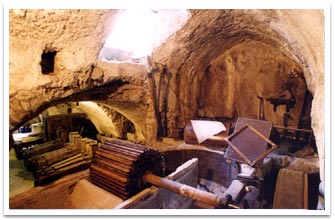« 2
| 3 |
Parting from Amalfi mills were opened in other centres on the coast, at Minori, Maiori, and Tramonti, always situated inland, away from the urban centres, they were built where the water falls were abundant and the flow of water constant and consistent….
The height of production was reached in the XVIII century when Amalfi
had 16 paper-mills and the paper-makers had their own corporation, with
a congregation that met in the Church of the Santo Spirito, that was sited
in the actual Piazza Santo Spirito.
The manufacture of paper continued in abundance for most of the XIX century
and with the Industrial revolution came some significant innovations.
New machines were introduced for example the “molazza” and
the “olandese” that accelerated the production, and gave work
to up to 400 workmen.

In the second half of the century the Amalfi Paper mills had a serious
crisis, the local product although excellent was too expensive and did
not keep up to date with a changing society and so lost a large slice
of the market.
The main cause of the products economic problems was due to the high cost
of production and also tied to the high price of the raw materials, it
was also made an uneconomic proposition with the introduction of wood
pulp paste, and because of the distance from the main centres that added
to the already high distribution costs.
The paper making activity from then on was also made complicated by disastrous floods, causing the proprietors to move their factories to other places leaving the valley abandoned, an interesting patrimony of primitive industrial archaeology….
Today in Amalfi there are only two working paper-mills and only one of these actively produces the famous Amalfi paper….
« 2
| 3 |